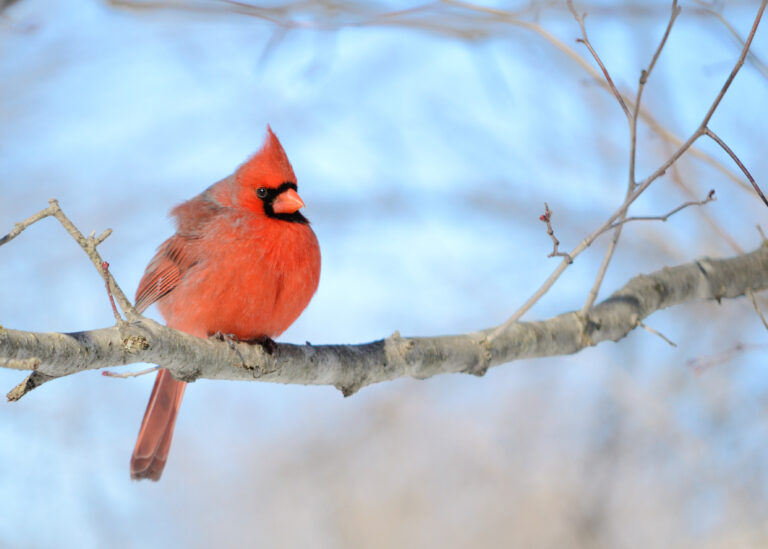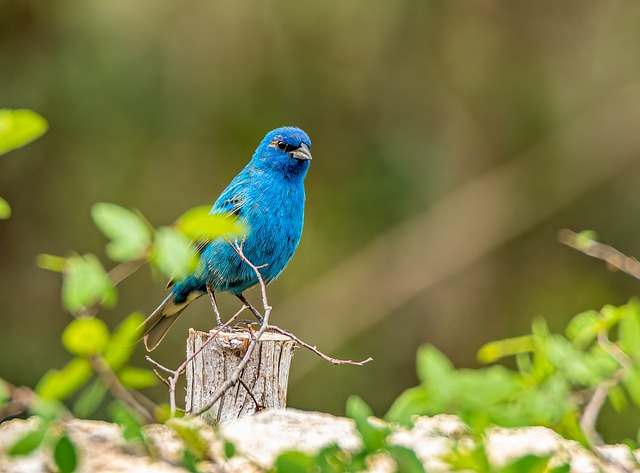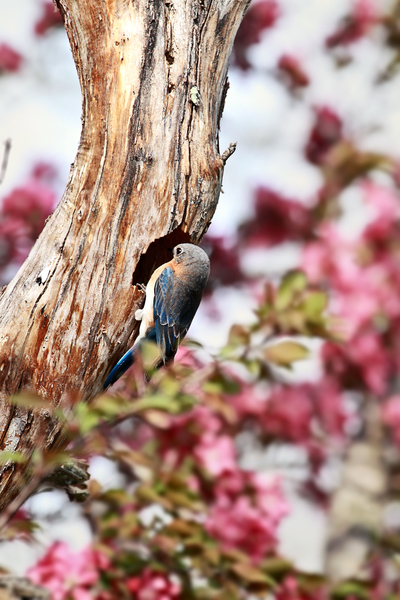Hi, I’m an avid birdwatcher and nature enthusiast, and today I’m excited to share with you my observations and knowledge about six common birds found in Arkansas.
As a state boasting diverse habitats, Arkansas is home to a wide variety of avian species.
In this article, we’ll explore the Northern Cardinal, Carolina Chickadee, Indigo Bunting, Eastern Bluebird, Brown-headed Cowbird, and Ruby-throated Hummingbird – all of which you might spot while exploring the natural beauty of Arkansas.
There are 420+ species of birds reported till now in the State of Arkansas.
| Image | Bird | Features | Price |
|---|---|---|---|
 |
| 9.7 | Check Price |
 |
| 9.5 | Check Price |
 |
| 9.1 | Check Price |
 |
| 8.8 | Check Price |
 |
| 8.6 | Check Price |
 |
| 8.2 | Check Price |
If you don’t have the time to read the whole article, check out this video for a quick understanding.
Common Birds in Arkansas
1. Northern Cardinal

You will find Northern Cardinals (Cardinalis cardinalis) in bushy areas or visit your backyard feeders.
They are quite comfortable around humans, and you will see them flying or hopping near you on the ground.
There is a specific time called the “Cardinal Cocktail Hour” that is named after their habitual routine of feeding on safflower at the start of the morning or by the end of the day.
Northern cardinals are very popular throughout the United States of America, so whenever one is passing by, people can easily identify them.
They are usually the residents of random dense bushes and tall elongated trees that are not too far from the bird feeders.
By keeping the least distance, they can easily get their food whenever hungry.
Both male and female Northern Cardinals have different identifying characteristics; for example, the male species has a full face covered in a black-colored mask with feathers of bright red color.
On the other hand, females have a dull and lighter tone with a little bit of a blend of red and brown color.
Their beaks are reddish-orange.
They usually feed on fruits, seeds, berries like mulberry and blueberry, and insects like grasshoppers, wasps, snails, etc.
Below are the characteristics of the Northern Cardinal,
| Scientific Name | Cardinalis cardinalis |
| Family Name | Cardinalidae |
| Length | 8-9 inches (20-23 cm) |
| Weight | 1.5-1.7 ounces (42-48 grams) |
| Wingspan | 10-12 inches (25-31 cm) |
| Habitat | Woodlands, gardens, shrublands, swamps |
| Food | Seeds, fruits, insects, spiders |
2. Carolina Chickadee

Carolina chickadees (Poecile carolinensis) are the second most common bird in Arkansas after the northern cardinals.
These are tiny, lightweight, and carry a cap of black color on their bulky heads.
Their throats are also black-colored, which helps with their identification.
Unlike many other birds who fly away as soon as they get a hint of a human appearance, these birds are not afraid of humans and will not bother if you pass by or appear in front of them.
Just do not try to make any close contact with them because that will scare them away.
Their wings are feathery and have gray color, just like the backside of their bodies.
Their cheeks form elongated white strips that stretch from the front all the way to the back of their heads.
Its white cheek is the best identification hint.
You will find them in city parks, forest areas, and bird feeders.
They are equally similar to another chickadee called Black-capped Chickadee.
They reside in diminishing forests, city parks, suburbs, and in-home backyards.
Carolina Chickadees would be most often seen around the bird feeders that contain sunflower seed oil, peanuts pieces, seeds of Nyjer, etc.
They usually feed Insects that are small, berries that are juicy, and other seeds.
They do not mind the type of feeder being provided, so they will eat from any of the platform feeders, tube feeders, and suet cages.
Below are the characteristics of the Carolina Chickadee,
| Scientific Name | Poecile carolinensis |
| Family Name | Paridae |
| Length | 3.9-4.7 inches (10-12 cm) |
| Weight | 0.3-0.4 ounces (8-12 grams) |
| Wingspan | 5.9-7.9 inches (15-20 cm) |
| Habitat | Deciduous and mixed forests, swamps, urban areas |
| Food | Insects, seeds, berries, spiders |
3. Indigo Bunting

Indigo Bunting’s scientific name is Passerina Cyanea.
The Indigo bunting has varying characteristics for both sexes, which makes it easier to distinguish between them.
Males stand out because of their bright and sharp features that can be easily detected from afar.
Males have white color over their bodies, and their bodies are fully covered in indigo blue colored lines that are strikingly bright and beautiful.
There is also a long and thin line that moves from the front of their eyes.
Their sizes in inches are about 4.7 to 5.1 inches in length and have a wingspan of between 7.5 to 8.7 inches.
They are overall medium-sized birds with almost an equal and medial length with a grayish tone of tail and wings.
Females, on the flip side, are not very striking, but they are easily differentiated by their colors.
They have an olive, brownish color all over their bodies and have a crest.
Their lower parts are close to the stomach area of dull shades and have a white-colored neck which makes it look like there’s a partition of the head and body.
Males have a distinctive blue color in them which grows over their whole bodies as the years pass by.
Their bills are sharp at the edges and have medium size overall.
They usually feed Acorn nuts, berries, ants, wasps, hickory nuts, scaled and small insects, pine weevils, caterpillars, and many others.
They are open to feeding in all types of feeders; you just only need to put their favorite choice of food in these feeders to attract them.
Below are the characteristics of the Indigo Bunting,
| Scientific Name | Passerina cyanea |
| Family Name | Cardinalidae |
| Length | 4.5-5.1 inches (11.5-13 cm) |
| Weight | 0.4-0.6 ounces (12-16 grams) |
| Wingspan | 7-9 inches (18-23 cm) |
| Habitat | Brushy areas, woodland edges, meadows, pastures |
| Food | Seeds, insects, spiders, small fruits |
4. Eastern Bluebird

Eastern bluebirds (Sialia Cialis) are also known as western bluebirds or as rusty browns.
Usually, when something becomes common, people might not pay attention to it, but for Eastern Bluebirds, it is not the case.
Even though these birds are common throughout Arkansas yet they are still very popular and adored by bird watchers.
They have a very beautiful combination of colors which helps them stand out from the rest of the common everyday birds.
They can stretch up to the maximum size of about eight point-one inches in length.
They have different identification hints for both sexes of males and females; for example, the male Eastern Bluebird is of blue color with its stomach area being a combination of red and white color.
On the other hand, you will notice that the females consist of grayish color on their tails and wings with blue spots in some places.
These birds are not aggressive birds, so they do not harm other birds.
Mainly it feeds on the nectar of the flowers and slits the plants through its sharp beak.
They usually feed on small insects and many other invertebrates
They reside in the wide and spacious woodlands, open farmlands, and sometimes orchards, and agricultural fields too.
Another extraordinary feature of this bird is that it has four toes, with the help of which it can simply climb trees and reach the treetops.
Below are the characteristics of the Eastern Bluebird,
| Scientific Name | Sialia sialis |
| Family Name | Turdidae |
| Length | 6.3-8.3 inches (16-21 cm) |
| Weight | 1.0-1.1 ounces (28-32 grams) |
| Wingspan | 9.8-12.6 inches (25-32 cm) |
| Habitat | Open woodlands, meadows, parks, gardens |
| Food | Insects, spiders, fruits, berries |
5. Brown-headed Cowbird

A brown-headed cowbird (Molothrus Ater), as its name suggests, is a bird that likes to chase around cows.
They belong to the Icteridae family.
It chases the cows in order to feed on the insects or pests that these cows have grown and inhabited on their skin, so because of it, these birds are named the “cowbirds.”
These are not adored by people as they have parasitic nature and endanger other species of birds.
The brown-headed cowbird we see today is the modified version of the original bird, which has changed over the years through evolution.
These primitive birds of this species probably used to feed on the grass insects or the insects on the Bison herds.
These birds in recent years have grown to a large number as they have good adaptability skills, and because of this surge in growth, a lot of other birds have been affected as these birds lay eggs in the nest made by them.
This has resulted in the endangerment of many species.
You will see them around the State of Arkansas, either flying around in the form groups in the cold season or on the ground walking and looking for food.
Around bird feeders, they will mostly be present.
They feed on millipedes, spiders, caterpillars, beetles, etc.
Their favorite ones are grasshoppers.
In the colder weather, almost ninety percentage points of their feed consist of seeds, and in the warmer season, their diet is half seeds of waste grains, weeds, and grass seeds.
You will find them feeding upon insects and seeds commonly.
Below are the characteristics of the Brown-headed Cowbird,
| Scientific Name | Molothrus ater |
| Family Name | Icteridae |
| Length | 6.3-8.7 inches (16-22 cm) |
| Weight | 1.1-1.8 ounces (30-50 grams) |
| Wingspan | 14-16 inches (36-41 cm) |
| Habitat | Open habitats, agricultural areas, grasslands |
| Food | Seeds, insects, grains |
6. Ruby-throated Hummingbird

From Costa Rica to the south of Canada, these birds will be seen flying around.
Even though these Ruby-throated Hummingbirds (Archilochus colubris) are very small in size, they still manage to migrate to various places.
In just one second, these birds flap their wings about fifty times. These movements of their wings are super fast to human eyes.
You will find them feeding upon the nectar of various flowers and dancing around them.
In gardens and in open spaces, you can find them in the warmer seasons when they can bathe in the beautiful sunlight and enjoy the warm weather.
These would mostly be seen in the plains towards the eastern side of the United States.
While on the western side of the US, you will see many other species of hummingbirds.
In the tropical places of the US, too, you will find different varieties of hummingbirds, but these specific species would only be found in the east.
Whenever there are some intruders in the surroundings of the Ruby-throated Hummingbird or in the area where it usually feeds, then they become very aggressive.
They would do everything to protect their territory.
Their flights are amazing as if they have mastered it, just like the Rufous and the Calliope species of hummingbirds.
In order to attract them, their feeder should contain sugar water.
They feed on orange or red-colored flowers mostly because these flowers contain more sugar.
Since the movements of their wings are too fast, the energy required by these birds is a lot too.
This energy is used up quickly, so these ruby-throated hummingbirds will feed twice a day in order to maintain their energy levels.
They feed on spiders and other types of insects.
They are omnivores, so they choose a diet accordingly.
Below are the characteristics of the Ruby-throated Hummingbird,
| Scientific Name | Archilochus colubris |
| Family Name | Trochilidae |
| Length | 3.0-3.5 inches (7.5-9 cm) |
| Weight | 0.1-0.2 ounces (2-6 grams) |
| Wingspan | 3.1-4.3 inches (8-11 cm) |
| Habitat | Woodlands, gardens, meadows, orchards |
| Food | Nectar, small insects, spiders, tree sap |
Conclusion
In conclusion, Arkansas offers birdwatchers and nature lovers a fantastic opportunity to observe a diverse range of bird species.
By getting to know the Northern Cardinal, Carolina Chickadee, Indigo Bunting, Eastern Bluebird, Brown-headed Cowbird, and Ruby-throated Hummingbird, we’ve only just scratched the surface of the state’s rich avian diversity.
These six common birds, each with their unique features and habitats, serve as a wonderful introduction to the world of birdwatching in Arkansas.
As you continue to explore the state’s natural areas, you’ll likely encounter even more fascinating bird species that contribute to the beauty and ecological balance of Arkansas.
Happy birdwatching!
FAQ
What is the best time of year to observe birds in Arkansas?
Spring and fall migrations offer excellent birdwatching opportunities in Arkansas, as many species pass through the state during these times. However, you can enjoy observing resident bird species year-round, with each season bringing its unique birdwatching experiences.
Where are some good birdwatching locations in Arkansas?
Arkansas has numerous birdwatching locations, including state parks, wildlife refuges, and nature centers. Some popular spots include the Arkansas River Valley, Buffalo National River, Ouachita National Forest, and the Dale Bumpers White River National Wildlife Refuge.
What kind of equipment do I need to start birdwatching in Arkansas?
To begin birdwatching, you’ll need a good pair of binoculars, a field guide to help identify birds, and comfortable clothing suitable for the weather conditions. A notebook or journal can be helpful for recording your observations, and a camera with a zoom lens can capture memorable moments.
Are there any rare or endangered bird species in Arkansas?
Yes, there are several rare and endangered bird species in Arkansas, such as the Red-cockaded Woodpecker and the Ivory-billed Woodpecker. Some species, like the Swainson’s Warbler and the Least Tern, are also of conservation concern and require special attention to protect their habitats.
Can I feed the birds in my backyard in Arkansas?
Feeding backyard birds can be a great way to attract and observe them up close. Make sure to provide a variety of bird seed, suet, or fruit, depending on the species you want to attract. Clean and maintain feeders regularly to prevent the spread of disease. It’s also essential to provide a source of fresh water for drinking and bathing.
How can I contribute to bird conservation efforts in Arkansas?
You can contribute to bird conservation efforts in Arkansas by participating in citizen science programs like the Great Backyard Bird Count, Christmas Bird Count, or Project FeederWatch. You can also support local conservation organizations, volunteer for habitat restoration projects, and promote responsible birdwatching practices.
Last Updated on April 9, 2023 by Lily Aldrin
